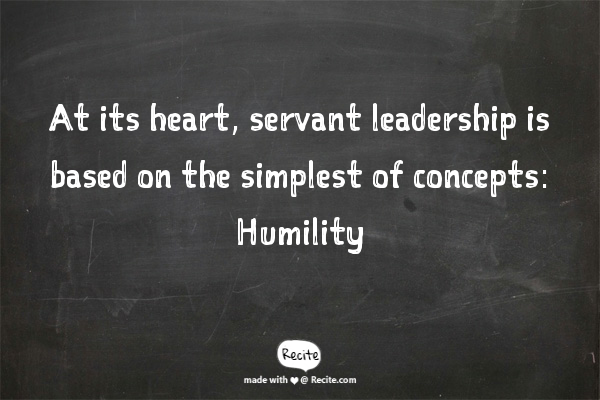Even though it’s been around as a concept for nearly 50 years—and in reality much longer, depending on how you define it—servant leadership has been growing in prominence. Maybe it’s a reaction to the excesses of ego and power in some sectors of business, or an acknowledgement of interdependence.

I suspect that the biggest factor, however, is a growing awareness that it works—and that it leaves everyone involved better off than zero-sum business philosophies where the winners end up on top and the losers don’t matter.
At its heart, servant leadership is based on the simplest of concepts: Humility – by caring for others and putting their well-being first. Here are some examples of why it’s so effective:
Motivation
By the nature of their position, leaders are highly visible—and few things are more motivating to team members than seeing leaders forego privilege and put themselves in the trenches. Those actions don’t undermine leadership; they support it, and in a way that nothing else can do.
Communication
More visibility, access, and empathy mean easier communication in both directions. When team members feel free to share their ideas and concerns—and to hear feedback from leadership without feeling frightened and defensive—everyone prospers.
Equality
There’s a reason we hold special esteem for leaders who come up through the ranks. When leadership is grounded in a shared sense of mission and acknowledgment of each team member’s importance, everyone feels ownership and everyone participates without external incentives or threats. Both leadership and team members are rewarded primarily in terms of the team’s performance rather than their individual power or earnings.
Loyalty
Servant leadership means teams are built on relationships, trust, and mutual respect rather than authority and ego, so bonds run deeper. People are committed to their team and their work in a way that goes way beyond a paycheck.
Integrity
When leaders put others’ interests ahead of their own, they make decisions differently. “What’s best for me?” is replaced with other questions: “What’s best for the team? What’s best for the mission? What’s best for our neighbors?”
It’s hard to move outside ethical bounds when you’re operating within that framework.
The bottom line: None of this means servant leadership operates in some Utopian fantasy world. It’s as connected as any other business model to the realities of expectations, performance and accountability—it just places those factors within a different context.
I suspect that the biggest reason people are continually moving toward servant leadership is also the most practical: It builds great teams and gets great results.
